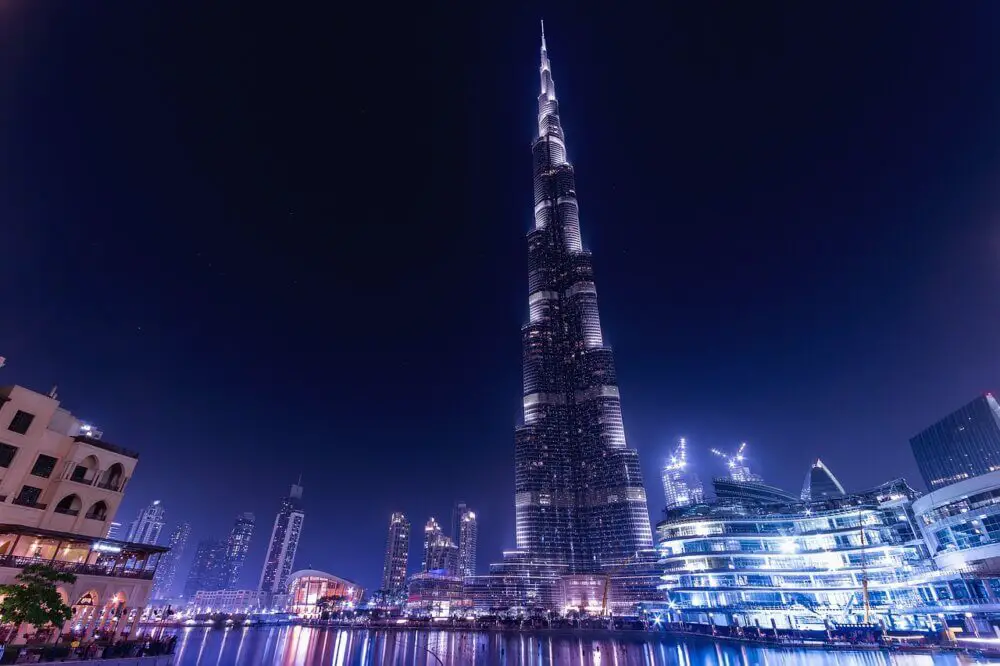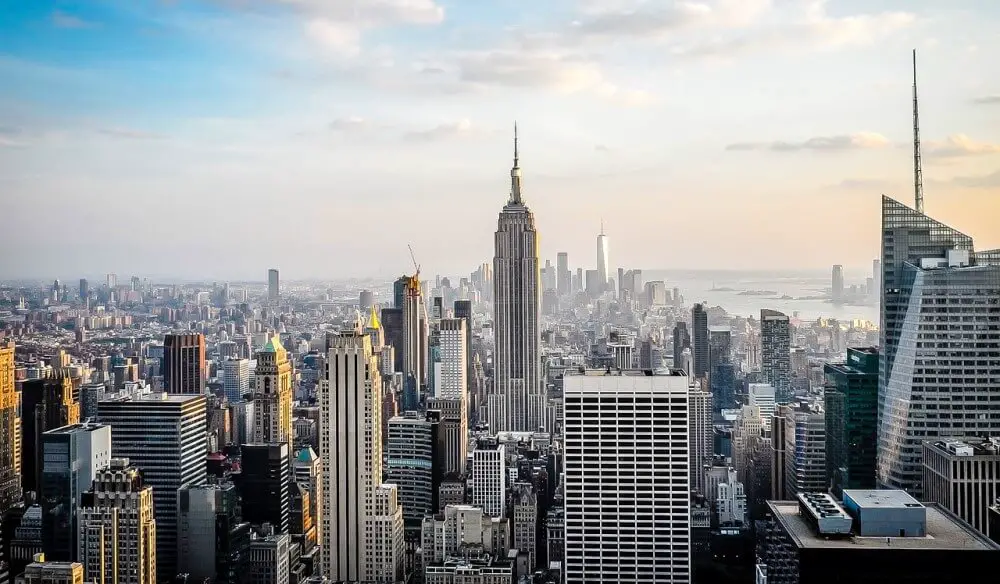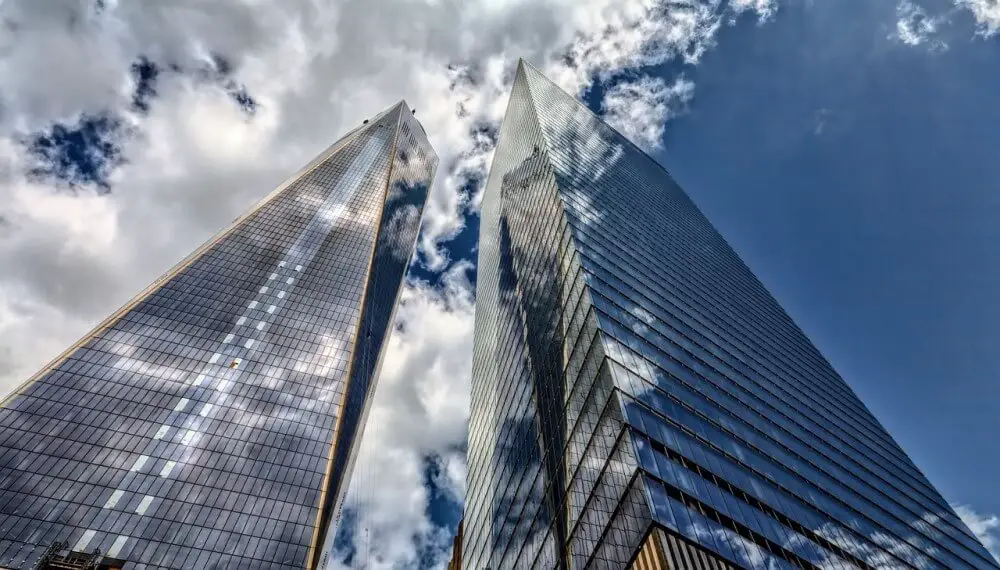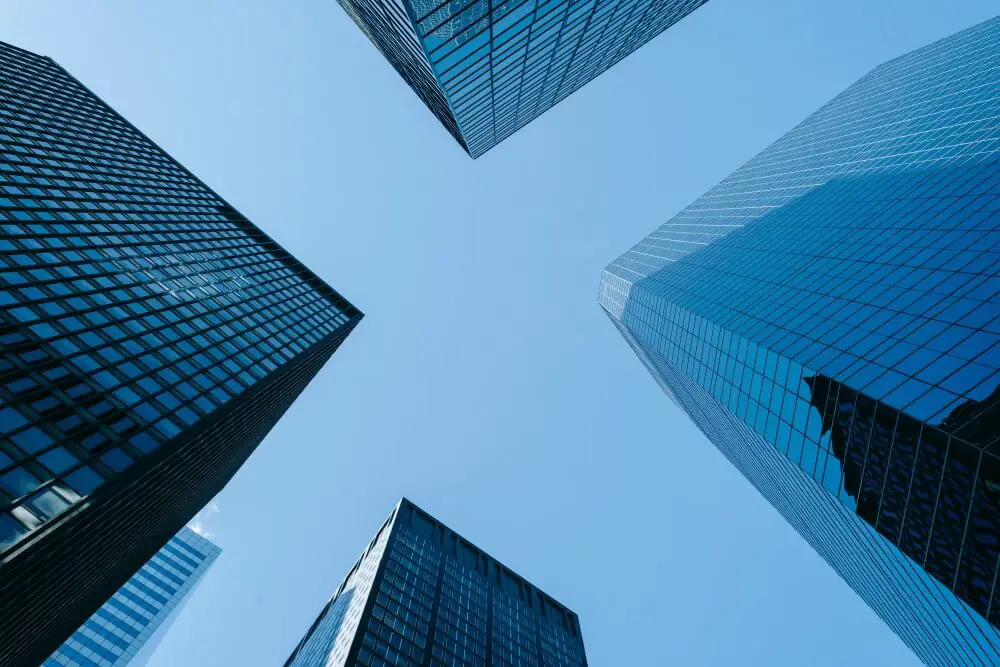If there’s one thing consistent throughout human history, it’s that we always want to build higher and reach further. The tallest buildings capture the public’s imagination, and symbolise our quest for constant improvement.
Luckily, despite there already being some impressively tall buildings already on Earth, we’ve still got plenty of sky to build into. To this day, there are towering structures being built that are pushing all vertical boundaries.
But, this begs one question: just how tall can a building be built?
In this article, we’ll probe the challenges of building megatall structures, what the tallest building ever proposed is, and whether we can in fact build a mile-high skyscraper.
But first, let’s explore the question of what the highest building possible is in more detail.
What is the maximum height possible for a building?
Put simply, there is no current designated limit for the maximum height possible for a building. From a structural standpoint, buildings could theoretically reach any height, so long as the foundation can support the structure.
That said, it is likely that there will be a point where buildings at a certain height are unfeasible. This is due to a combination of factors, including the structural necessities of the building and the practical drawbacks of both its construction and functionality.
However, it’s worth noting that this matter is not settled – different figures from across the construction and architecture professions may give you different answers. And, with further testing and innovation, there’s really no telling what buildings of the future may look like.
What are the challenges of building megatall structures?
With any megatall structure, there are a number of fundamental challenges that need to be overcome. Some of the biggest include the soaring costs, environmental
Impact and, before anything else, assessing whether there is the demand for such a vast structure.
Let’s explore these challenges in more detail.
Cost
Put simply, the financial clout needed to build megatall buildings is gigantic. From the planning phase right through to the end of construction, each aspect of getting a megatall off the ground requires serious investment.
For evidence of this, you only need to look at the expenditure needed to build the current tallest building in the world, which is the Burj Khalifa. This cost 1.5 billion dollars, and was largely only possible thanks to a huge donation from the ruler of the UAE at the time, Sheikh Khalifa.
To even contemplate building a taller structure than anything that currently exists, the eye-watering budget will need to be agreed to, which may well be easier said than done.
Indeed, maintaining a megatall building that is far higher than anything currently built is not likely to be easy. After all, the building would almost certainly have to support human inhabitation all the way to its upper floors, which means that amenities have to be provided at all levels.
The mechanics of plumbing a megatall skyscraper, for example, require intricate planning in their own right. There’s also the issue of the elevators, which would need to take people up thousands of feet, and would likely require a lot of costly maintenance work.

Demand
Before the spades are put into the ground on any new megatall building, there needs to be a justification for the structure in the first place. Of course, this is true for any building that is constructed, but with a project of such massive size, there would need to be evidence that it would serve a functional purpose.
Measuring this demand requires careful analysis on behalf of planners, to make sure that the building’s operating costs do not outweigh the potential income that it will bring in. For example, if the megatall was a hotel, then organisers would need to prove that there would be enough visitors to occupy its many rooms.
As well as this, there needs to be a consideration of a range of mitigating factors that may sway demand levels. After all, it’s much easier to build large-scale projects in times of societal economic prosperity, but this is not always the case, and all eventualities need to be accounted for in the planning phase.
Environmental Concerns
As a natural by-product of their existence, modern megatall structures consume hefty amounts of energy, and use up a lot of resources. From the transportation of construction materials, to their construction and ongoing maintenance, these buildings can have quite the carbon footprint.
It is for this reason that megatall buildings have come under scrutiny around the world for the effect they have on the local environment. However, architects and civil engineers working on the skyscrapers of today do put in measures to counteract some of these effects, such as HVAC systems and energy-efficient lighting.
Asides from this, the astounding height of the tallest buildings in the world today means that structures invariably create their own microclimate. They can block light and wind, and cause wind tunnels to form in its immediate environs. With a structure thousands of feet tall, it’s a challenge that needs to be considered before any firm plans are made.
Structural Systems
As a general rule of thumb, the higher a building reaches, the greater forces it has to withstand. There’s gravity, seismic forces and wind to contend with, for starters.
It is the job of engineers to make sure that the lower floors of the building are strong enough to support the many upper floors. To ensure this, a megatall’s foundations are usually very deep, especially if the ground conditions at the building site are sensitive.
And, in areas at risk of earthquakes, preventative measures would have to be implemented, as megatalls are some of the most susceptible to damage during tectonic movement. Tuned mass dampers and shock absorbers would help to counter these forces, but, even with these measures, ensuring structural stability in megatalls is always a challenge.

Aesthetics
Of course, there is also a question of aesthetics when it comes to building megatall structures. Such lofty buildings have a huge visual impact on a city’s skyline, and in many cases a city’s tallest buildings become emblematic of a city as a whole.
So, it is a challenge for any architects working on the tallest buildings in the world to deliver a design that not only incorporates all structural necessities, but also fits in aesthetically with its surrounding environment.
Will we build a mile-high building?
Now that we know what challenges are faced with building megatall structures, it’s time to ask: could we construct a building that reaches a mile high?
Well, the answer is probably a yes. Researchers at MIT, using data from the Council on Tall Buildings and Urban Habitat, have suggested a 9% chance that a mile-high skyscraper will be built by the year 2050.
Even if this milestone is not reached, it’s still probable that a mile high structure will be constructed at some point. That said, for the reasons outlined above, it will likely prove an extremely challenging build with a heavy cost, and planners would need to prove that there is a demand for it.
How tall are the current tallest buildings in the world?
The current tallest buildings in the world have extended well beyond 2,000 feet in height. For example, the world’s current tallest building, which is the Burj Khalifa in the UAE, is 2,722 feet tall.
Meanwhile, there are two other buildings whose height reaches this milestone. These are the soon-to-be completed Merdeka 118 Tower in Kuala Lumpur, which is 2,227 feet tall, and the Shanghai Tower, which rises 2,073 feet.
To be considered a skyscraper, buildings have to be more than 492 feet, or 150 metres, tall. However, any old skyscraper can no longer claim to be one of the tallest buildings in the world. There are almost 23,000 of them today!

What is the tallest building ever proposed?
Although it never came to fruition, the tallest building ever proposed was the X-Seed Tower in Japan, designed by Japanese company Taisei Corporation in 1995. If built, the structure would have been colossal, rising to 4,000 metres in height, as the name of the proposal suggests.
The impressive designs were inspired by the nearby Mount Fuji, and feature a circular base that would have been almost 4 miles in diameter. It would have been more than four times the height of the Burj Khalifa.
The building never came to light chiefly because it was never really intended to. In truth, it was more of a conceptual showcase of what architects could do with buildings of great height. Nonetheless, the X-Seed 4000 proposal continues to stir the imagination.
What is the tallest building currently planned?
The tallest building currently planned in the world is the Jeddah tower in the city of Jeddah, Saudi Arabia. Foundation works have started on the megatall building that will be the first building to reach 1 kilometres in height.
That is, if the building is built at all. The project has been stalled since 2018, and works have yet to resume. It’s still not known when, or even if, they will resume, leaving Burj Khalifa’s crown as the tallest building safe for a little longer.
That’s it for our guide assessing what the tallest building we could build is. Although there isn’t a definitive answer to how high buildings can reach, it’s exciting to know that we haven’t scratched the surface of what’s possible.
For more related news, views and in-depth guides, explore more of our skyscrapers and tall buildings articles. And, check out our summary of which current buildings will last the longest.
Or, if you’d like more guides to building and architecture vocabulary, take a look at our selection of building wikis, including what the definition to ha-ha is.
Last Updated on 22 April 2023 by Michael
